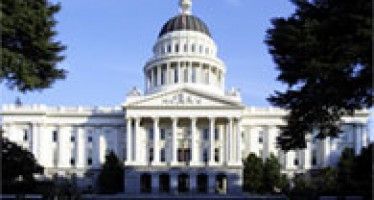Special problems for high-speed rail
By John Seiler
The Mercury-News reported today:
“SACRAMENTO — High-speed rail officials acknowledged Thursday that they almost certainly won’t break ground on the $69 billion project as planned in July after hitting some last-minute bumps in the road. And even more delays are possible as a court battle begins that could wipe out voters’ approval of the bullet train.”
Actually, the problem is that the train voters approved in 2008 with Proposition 1A is not the one being constructed, as the article seems to hint in its next paragraph:
“On Friday morning, opponents from the Bay Area and Central Valley, led by the former chairman of the project, will begin arguing in Sacramento Superior Court that the train has run so far off-track that a judge should take the extraordinary step of hitting the brakes on construction plans. They want to invalidate the $10 billion bond measure voters approved in November 2008 because the project has since doubled in cost while ridership estimates have dwindled and ticket price projections have shot up.”
The former chairman is former state Sen. Quentin Kopp.
Much of the problem with the project is that it’s seen as a kind of continuation of the projects of the past, especially the water, university and K-12 school projects of the late 1950s and 1960s of Gov. Pat Brown, the father of current Gov. Jerry Brown. In his State-of-the-State in January, Jerry Brown enthused about the great accomplishments of California’s past:
“And oil production, movies, an aircraft industry, the longest suspension bridge in the world, aerospace, the first freeways, grand water projects, Jet Propulsion Laboratory, Venture Capital, Silicon Valley, Hewlett Packard, Apple, Qualcomm, Google and countless others, existing and still just imagined.”
1960 vs. 2010
But this isn’t his father’s 1960. Consider some major differences between 1960 and 2010, the U.S. Census years, militating against building the bullet train:
* The population more than doubled, from 15.7 million to 37.3 million. That would provide more potential passengers for the train. But it also means the properties to be seized under eminent domain and ripped up to build the train have more people and farms than in 1960.
* In 1960, the Jet Age was just beginning. The Boeing 707, which opened up the world to inexpensive jet travel, went into production in 1958. From 1958 to 1960, factories turned out 186 of the 707s for the global market; today, thousands of better, newer aircraft solve the world. In 1960, train travel — on slow trains — still was common to get around the country. Today air travel is by far the preferred way to get around the country, cheap and safe. That includes trips from Los Angeles to San Francisco, the advertised main route of the bullet train.
* In 1960, Ike’s Interstate Highway System had been authorized for just four years and construction was beginning. Now it long has been completed. The problem now, of course, is the state’s long-time refusal to build enough new roads, or keep up the current ones, to match the state’s growing population, leading to gridlock. Ironically, even if the bullet train is built, most of the travel time could end up being stuck in traffic to and from the rail stations.
* In 1960, environmentalism hardly existed. It wouldn’t take off until 1962 with the publication of Rachel Carson’s “Silent Spring.” Pat Brown could build the waterways with few objections from environmentalists. Today the environmental movement is one of the most powerful in the state. Normally a Jerry Brown ally, it has been a major force in lawsuits against the bullet train’s construction. The supposed environmental benefits of high-speed rail — such as reduced greenhouse gases — have been trumped by the local destruction of the environment involved in the massive construction.
* In 1960, the state’s finances were in much better shape. Although a budget surplus seems to have been accomplished this year because of the Proposition 30 tax increase, the state still faces what Brown calls a Wall of Debt; and there are $500 billion in unfunded pension liabilities.
* In 1960, the public-employee unions were minor players. In the mid-1970s, Jerry Brown, in his first stint as governor, signed bills giving them collective bargaining rights. That turned the unions into the most powerful political players in the state. Today their desires, including financing the public employees’ spiked pensions, come first, crowding out other spending priorities, including the bullet train. In 1960, there was room to increase taxes to pay for gigantic government projects. In 2013, there is much less room for such increases — and likely no room at all.
* The state tax burden is much higher. In 1960, the base sales tax rate was 4 percent; today it’s 7.5 percent, almost double. The top income tax rate in 1960 was 7 percent; today’ it’s 13.3 percent, almost double.
In short, the political climate and the tax base both have changed in 60 years, both now being unable to support such a gigantic, expensive and intrusive project as high-speed rail.
Related Articles
CalWatchdog Morning Read – August 22
Legislators’ new campaign slush funds Casino hires dad to lobby his daughter? Two OC GOP legislative candidates running from Trump
Budget Vote Imminent?
Katy Grimes and Anthony Pignataro: Yeah, right. Though you wouldn’t believe how tense the Capitol is right now. Both parties
Bills Report 1: Stadium/CEQA, other bills pass…
Here is a quick rundown of some of the bills to pass the California Legislature this week: Fracking regulations bill,





